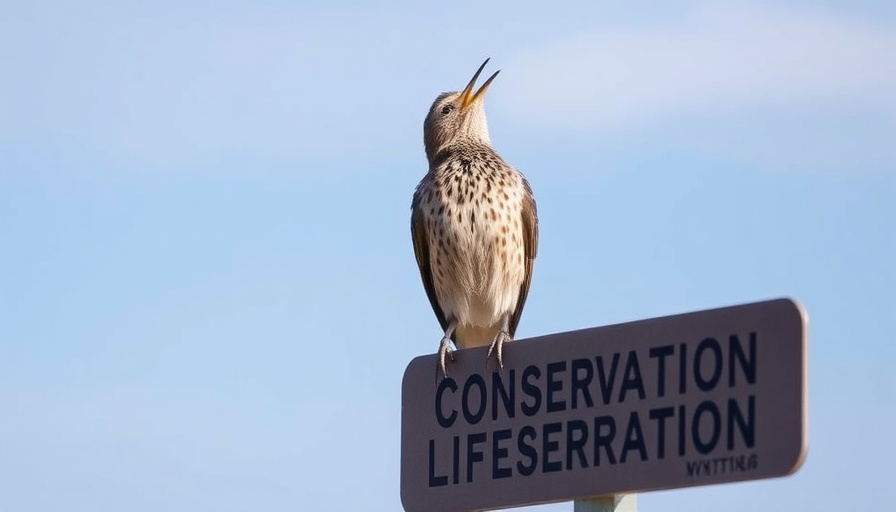
Understanding the Fate of Sage Thrashers and Their Critical Habitat
The Sage Thrasher, known scientifically as Oreoscoptes montanus, is a captivating songbird that has enchanted birdwatchers in the American West. With its melodious songs echoing across expansive sagebrush landscapes, the Sage Thrasher once sung freely amidst the rolling hills of the Great Basin. However, as agricultural expansion—particularly in the form of alfalfa and potato farming—has devastated native sagebrush habitats, the Sage Thrasher's presence has significantly dwindled.
Challenges Facing the Sagebrush Ecosystem
The importance of sagebrush cannot be overstated; it serves as a fundamental habitat for several bird species, including the Sage Thrasher. Yet, this habitat is consistently under threat from urban development and agricultural practices. According to recovery strategies outlined by Environment Canada, the predominant factors affecting the Sage Thrasher population include habitat loss and degradation from agricultural cultivation, wildfire occurrences, and unsustainable grazing practices. These threats not only impact the Sage Thrasher but also the entire ecosystem that relies on healthy sagebrush for sustenance and protection.
The Importance of Conservation Efforts
Among various conservation strategies, initiatives are underway to safeguard the remaining critical habitats essential for the Sage Thrasher's survival. Protection efforts encompass the establishment of Important Bird Areas, and organizations like the Deschutes Land Trust are actively involved in preserving vital inland ecosystems, like the Aspen Valley Ranch, that host sagebrush and the species alike. Moreover, these initiatives engage local communities, inviting them to advocate for and participate in restoration projects aimed at reclaiming vital sagebrush landscapes, thus allowing birds like the Sage Thrasher a fighting chance for survival.
Future Directions and Community Involvement
With an estimated population mostly concentrated in British Columbia and parts of the U.S., the future of the Sage Thrasher lies in continued advocacy and awareness. Community members can play a pivotal role by sharing their experiences, engaging in local restoration projects, and spreading awareness about the ecological significance of sagebrush. Every action counts, whether it is supporting agricultural practices that are mindful of avian habitats or participating in local bird counts, allowing enthusiasts and casual observers alike to contribute to the conservation narrative.
As we usher in efforts to protect the Sage Thrasher, we invite everyone to connect with organizations like BirdNote to learn how their stories can help raise much-needed awareness for this enchanting yet vulnerable bird.
 Add Row
Add Row  Add
Add 




 Add Row
Add Row  Add
Add 

Write A Comment